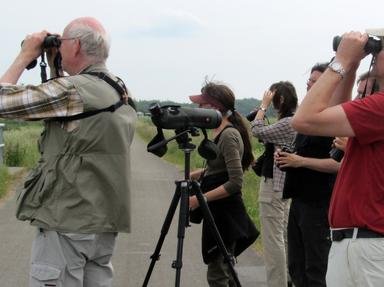Quiz Answer Key and Fun Facts
1. After a good night's roost, the puffin shown in the picture clue has puffed up its feathers and taken a look in a handy mirror to check on its appearance. A quick glance confirmed its opinion that it is a member of which specific species of puffin?
2. A puffin who has spent the night bobbing about at sea might fancy a bit of exercise to start the day. Which of these describes best the process by which a puffin becomes airborne in these circumstances?
3. While at sea there is one particular aspect of a puffin's daily personal grooming routine that is important to its survival and takes up a large proportion of its day. What is it?
4. Breakfast (and lunch and dinner) for a puffin often consists of a tasty meal of freshly caught fish. What is the most common method that a puffin will use to hang on to its meal prior to devouring it?
5. At the start of the breeding season, a puffin will probably devote some time to spring cleaning and home improvements. What is it likely to be working on?
6. On most days during the breeding season puffins indulge in a courtship routine that involves strutting towards each other before repeatedly rattling their beaks together. What is this practice known as?
7. Egg-laying day is likely to be quite a difficult one for a female puffin as puffin eggs are quite large in relation to the size of the bird - luckily though a puffin will usually only lay one egg per year.
8. Any puffin with a sense of self-preservation will attempt to avoid its predators. Which of the following options is most likely to attack and kill an adult puffin?
9. In which European country should puffins take extra care around humans, as puffin heart is considered a traditional delicacy?
10. While spending a relaxing evening taking a stroll around the colony, one particular puffin spotted a group of strange beings wielding binoculars and cameras. Wandering over for a closer look, it was somewhat surprised to hear itself described as a "sea" variety of which other bird?
Source: Author
Fifiona81
This quiz was reviewed by FunTrivia editor
rossian before going online.
Any errors found in FunTrivia content are routinely corrected through our feedback system.

